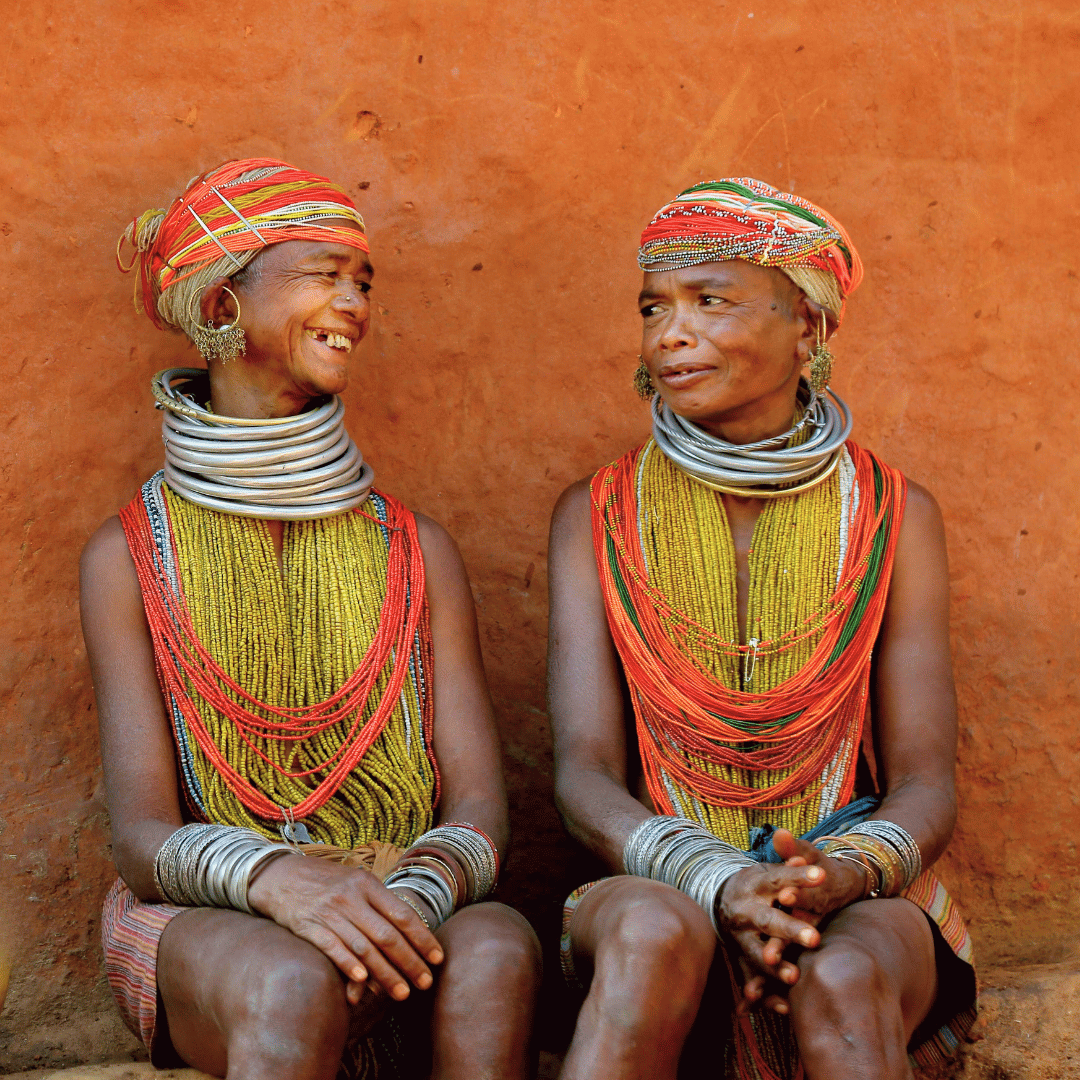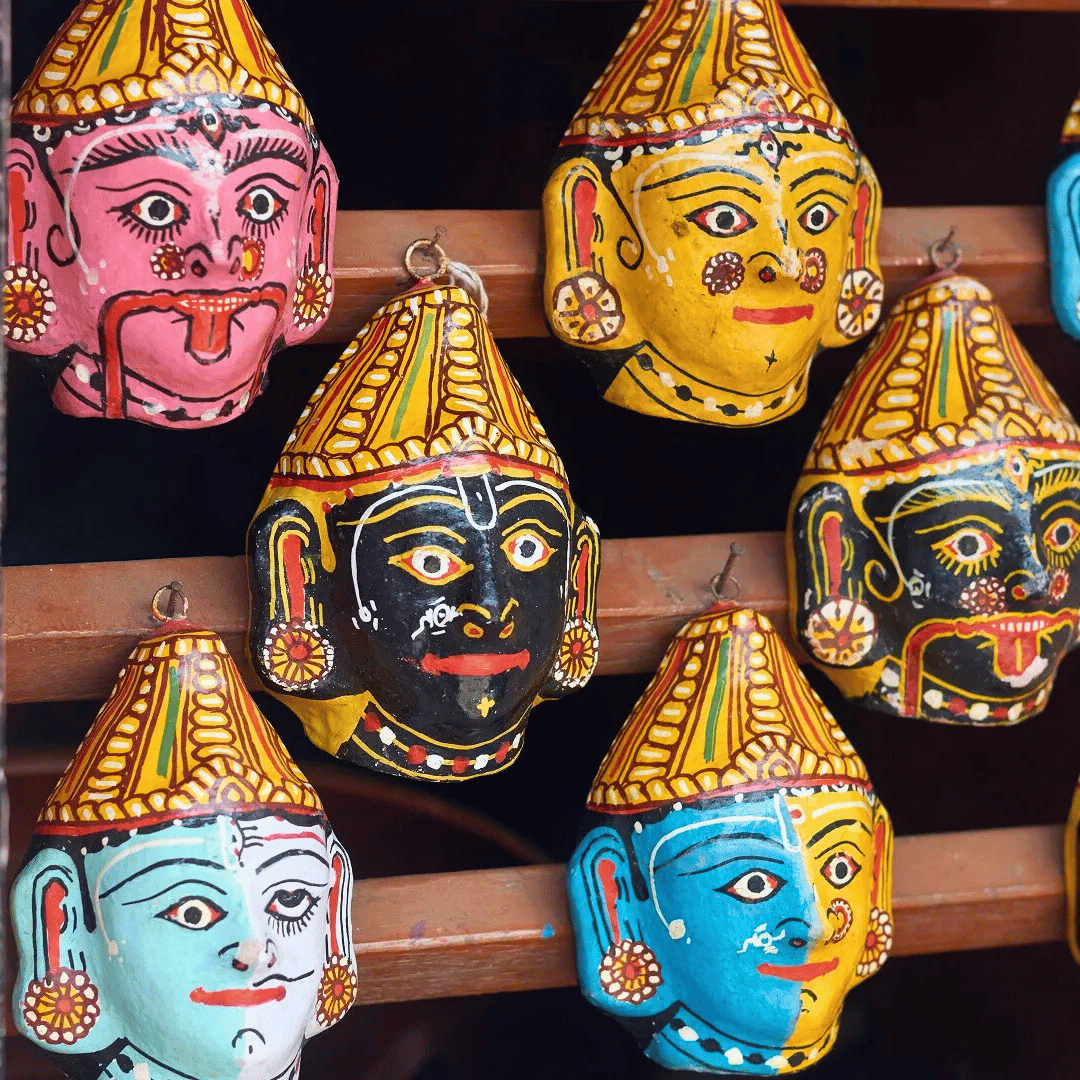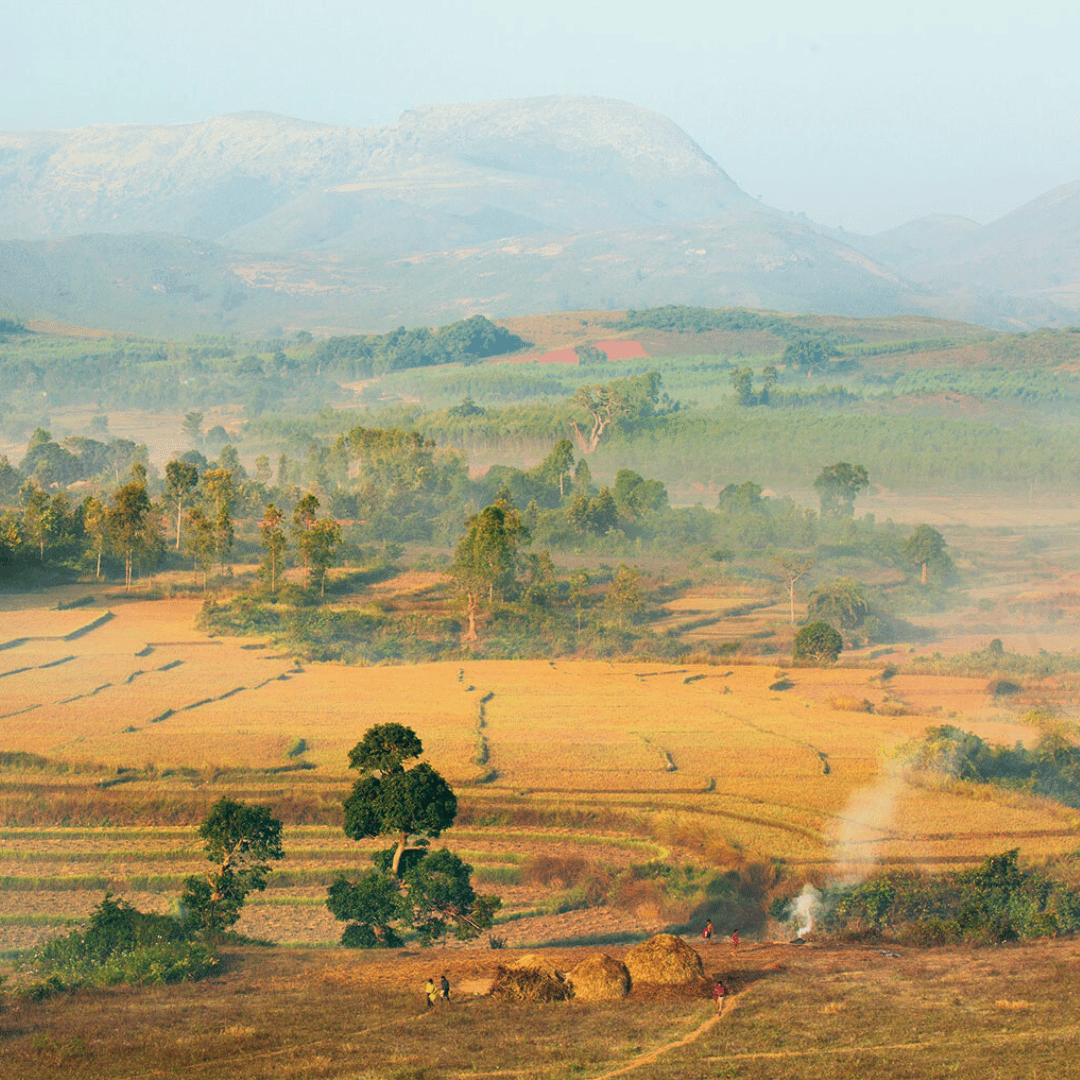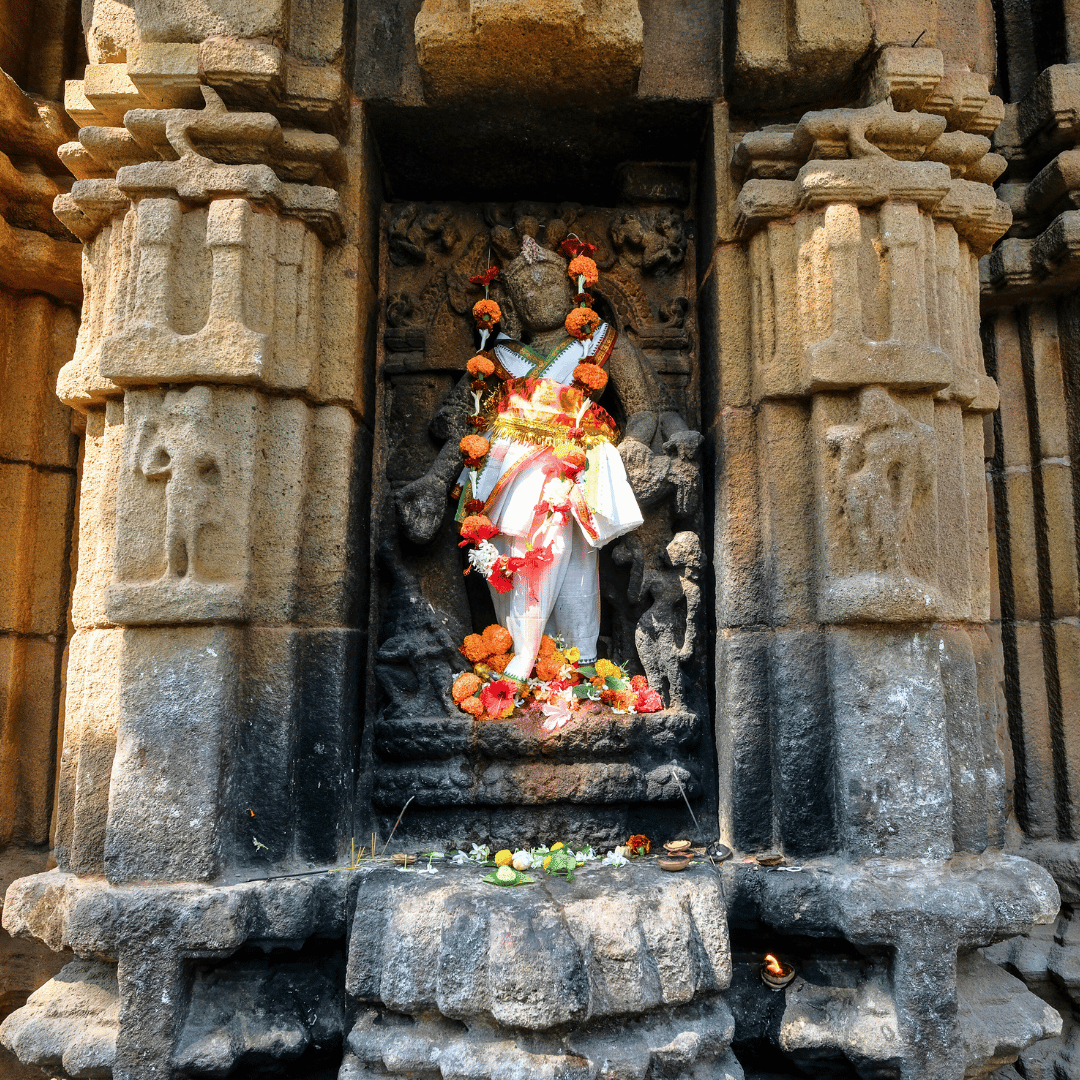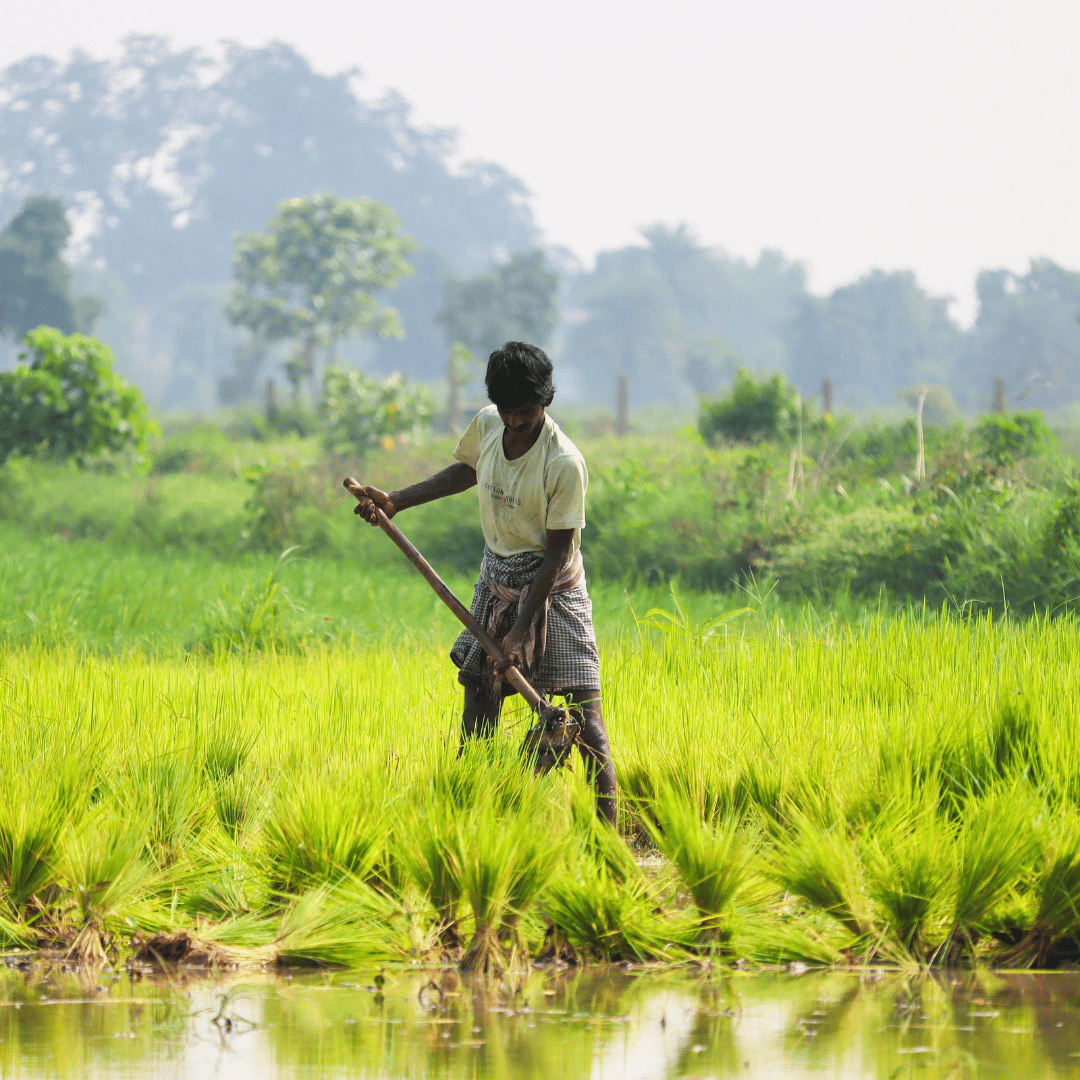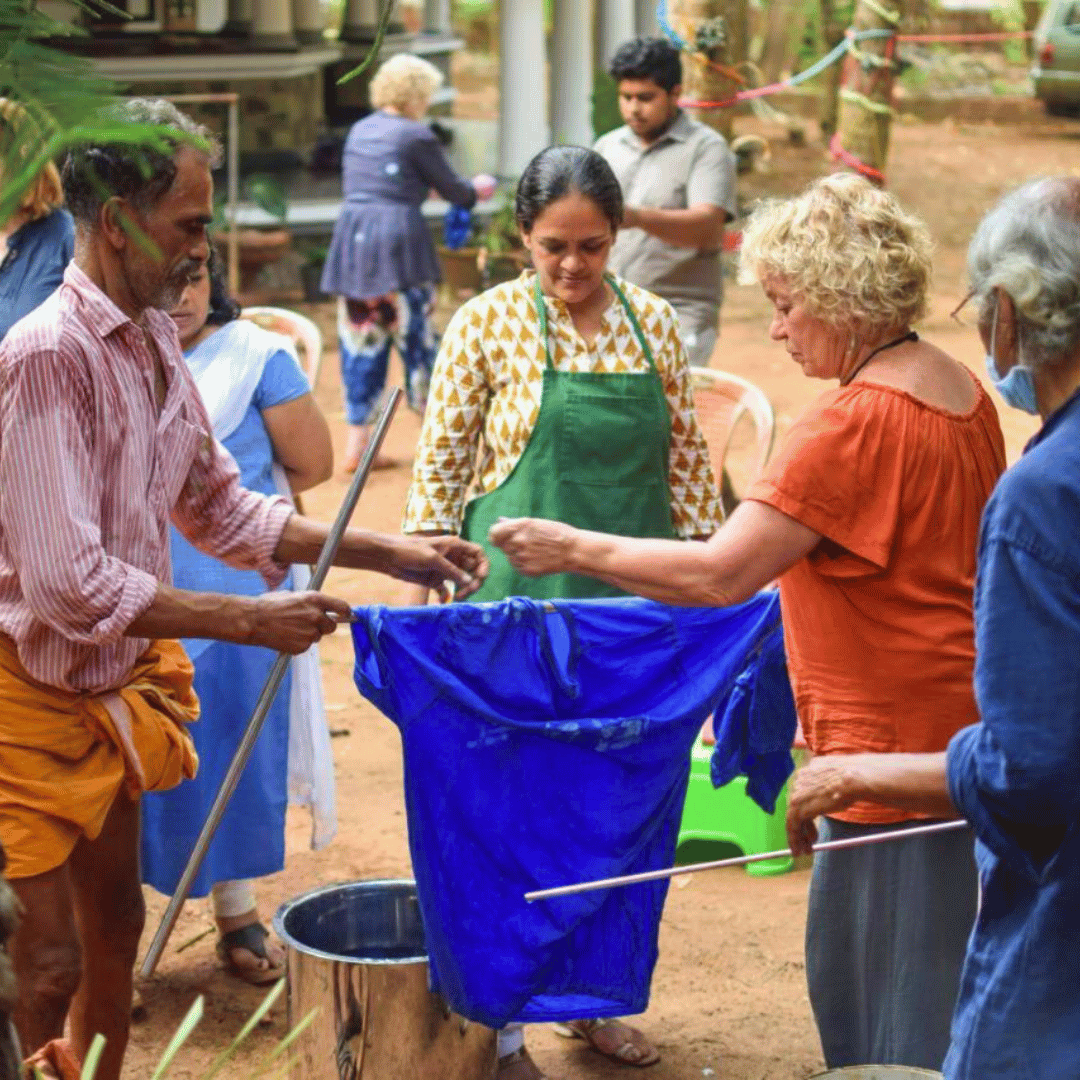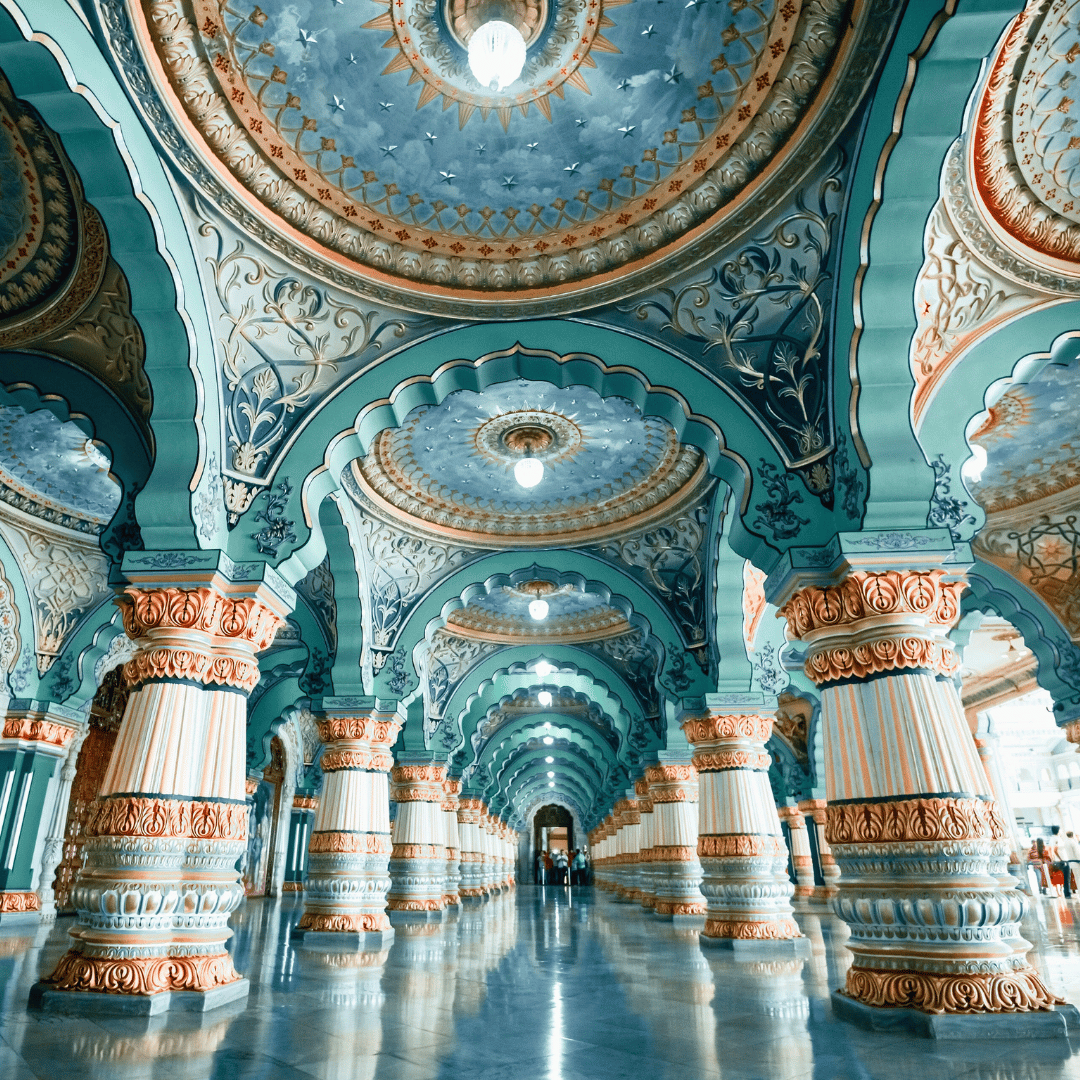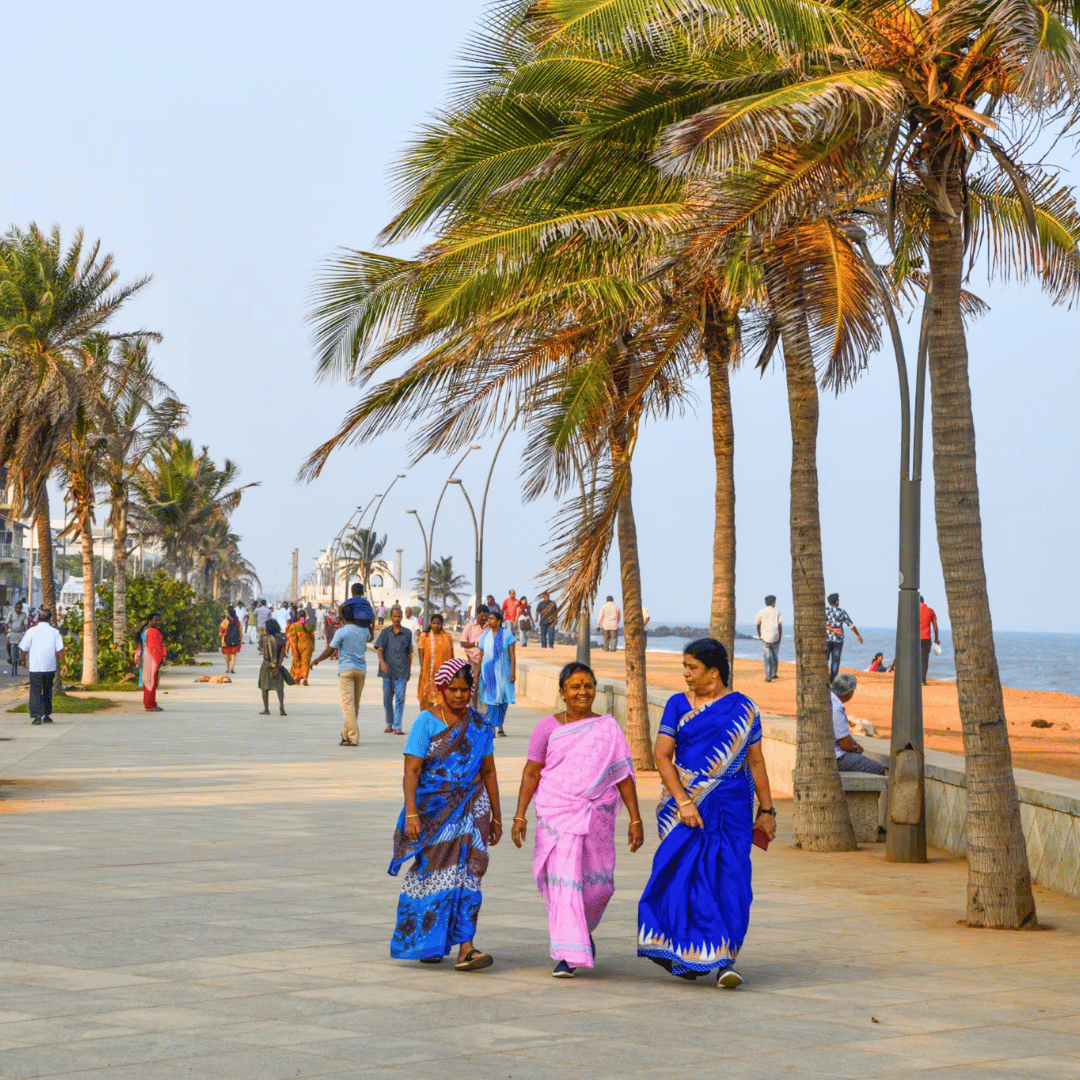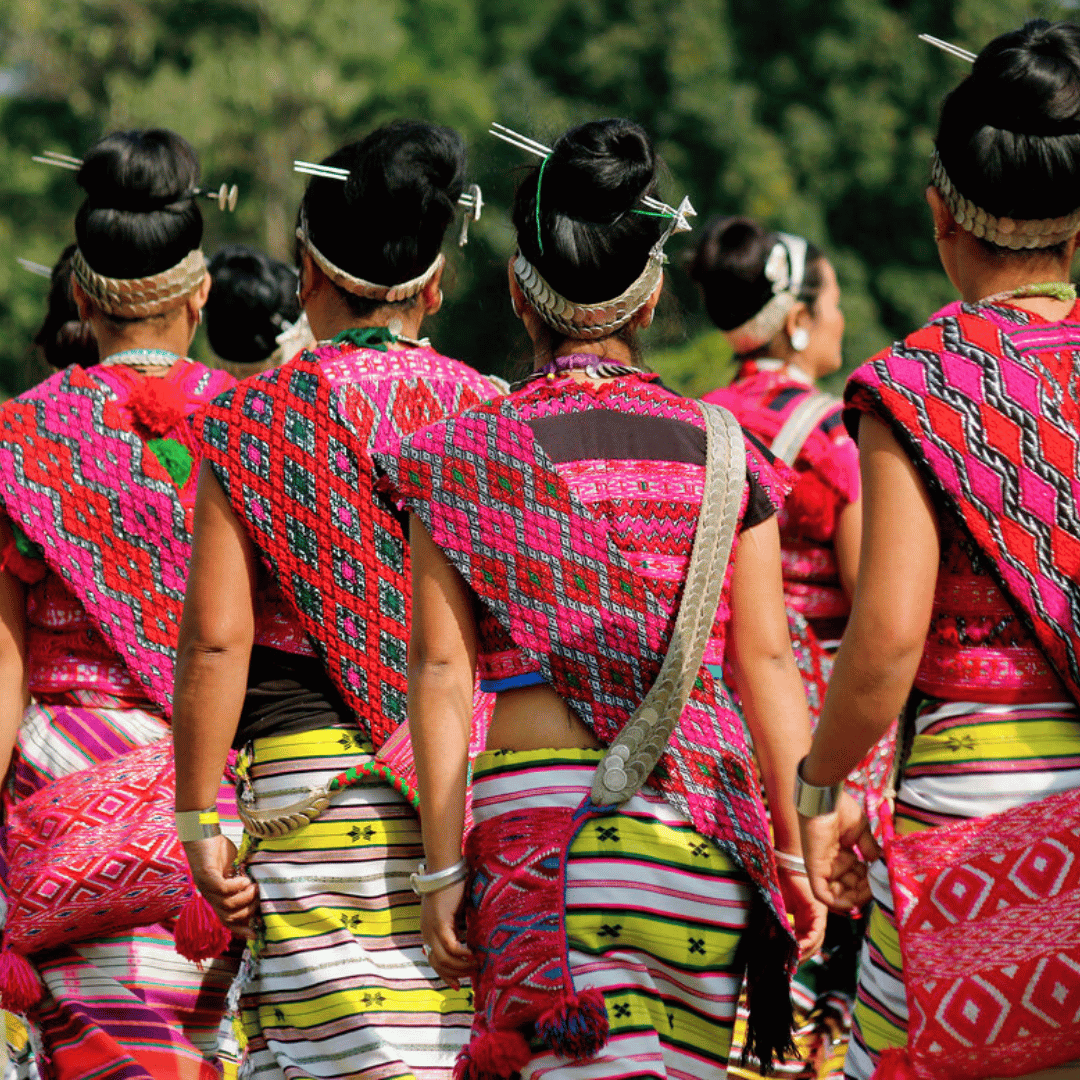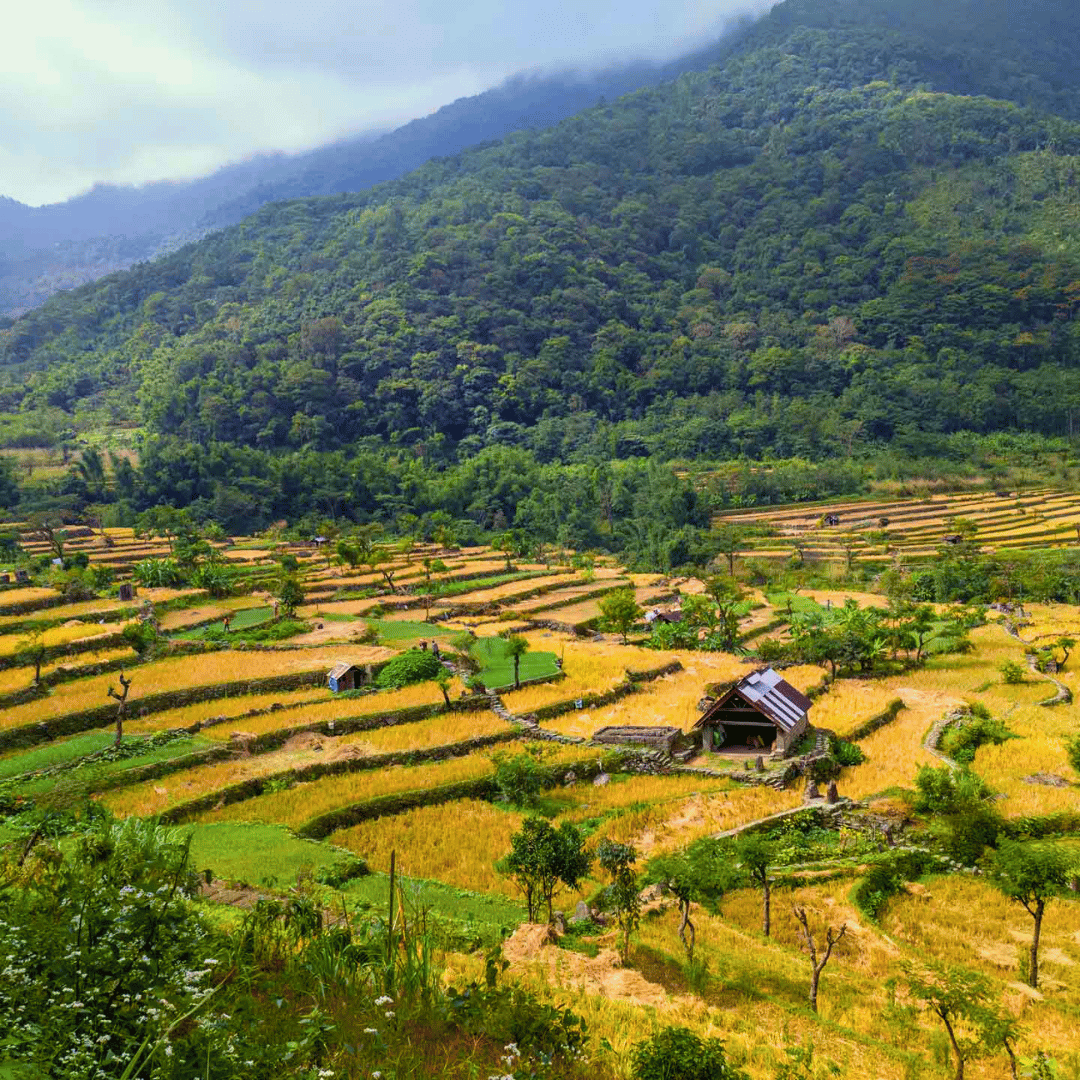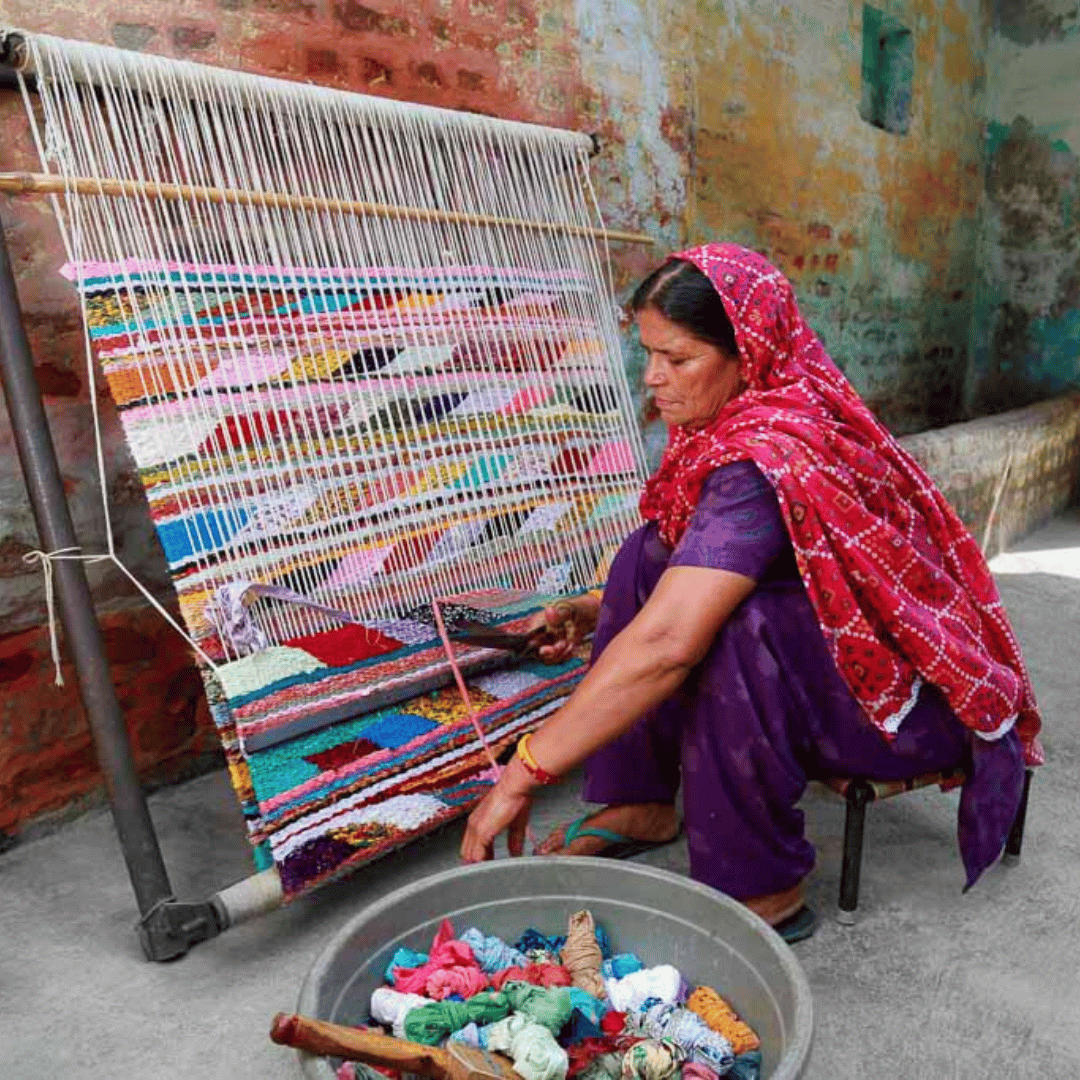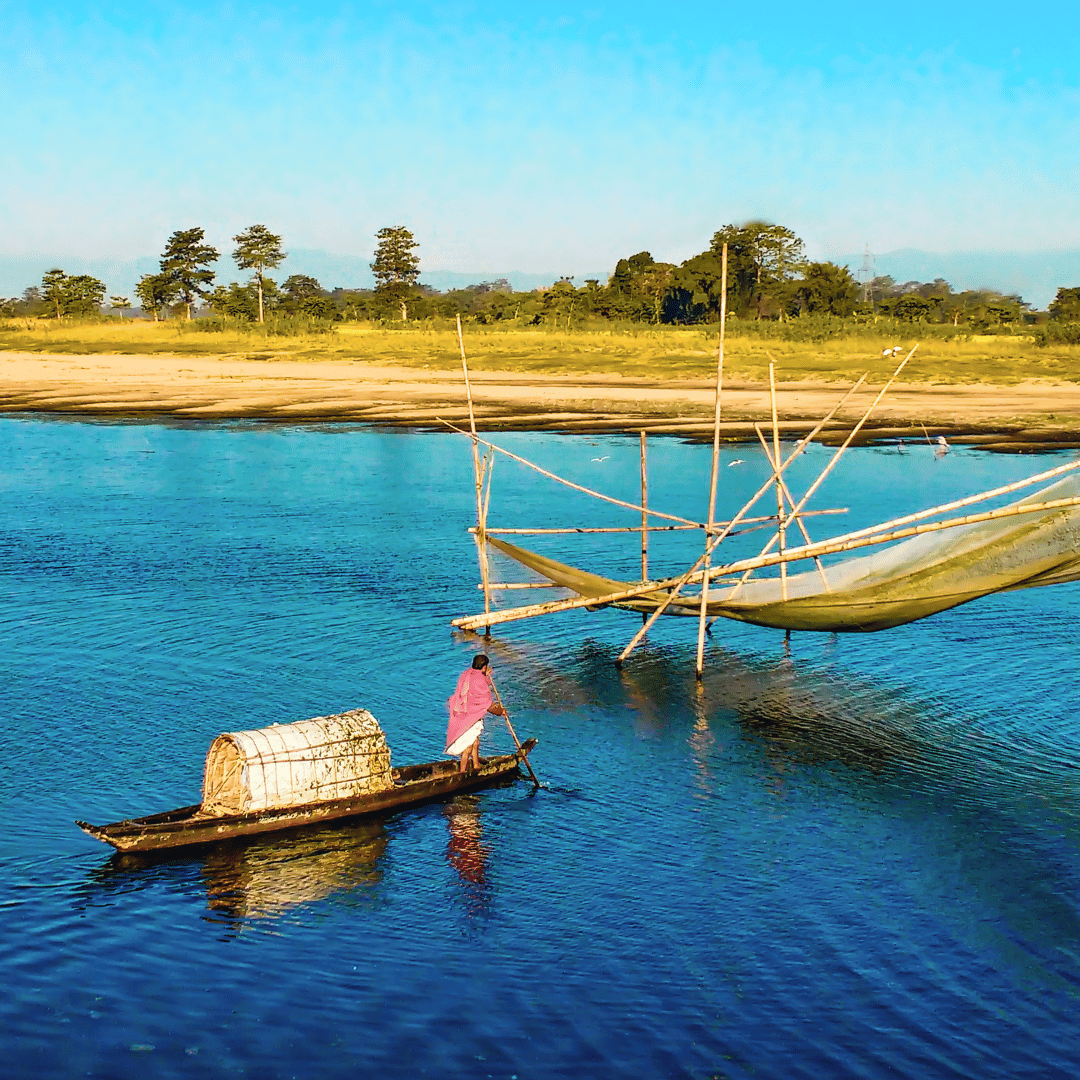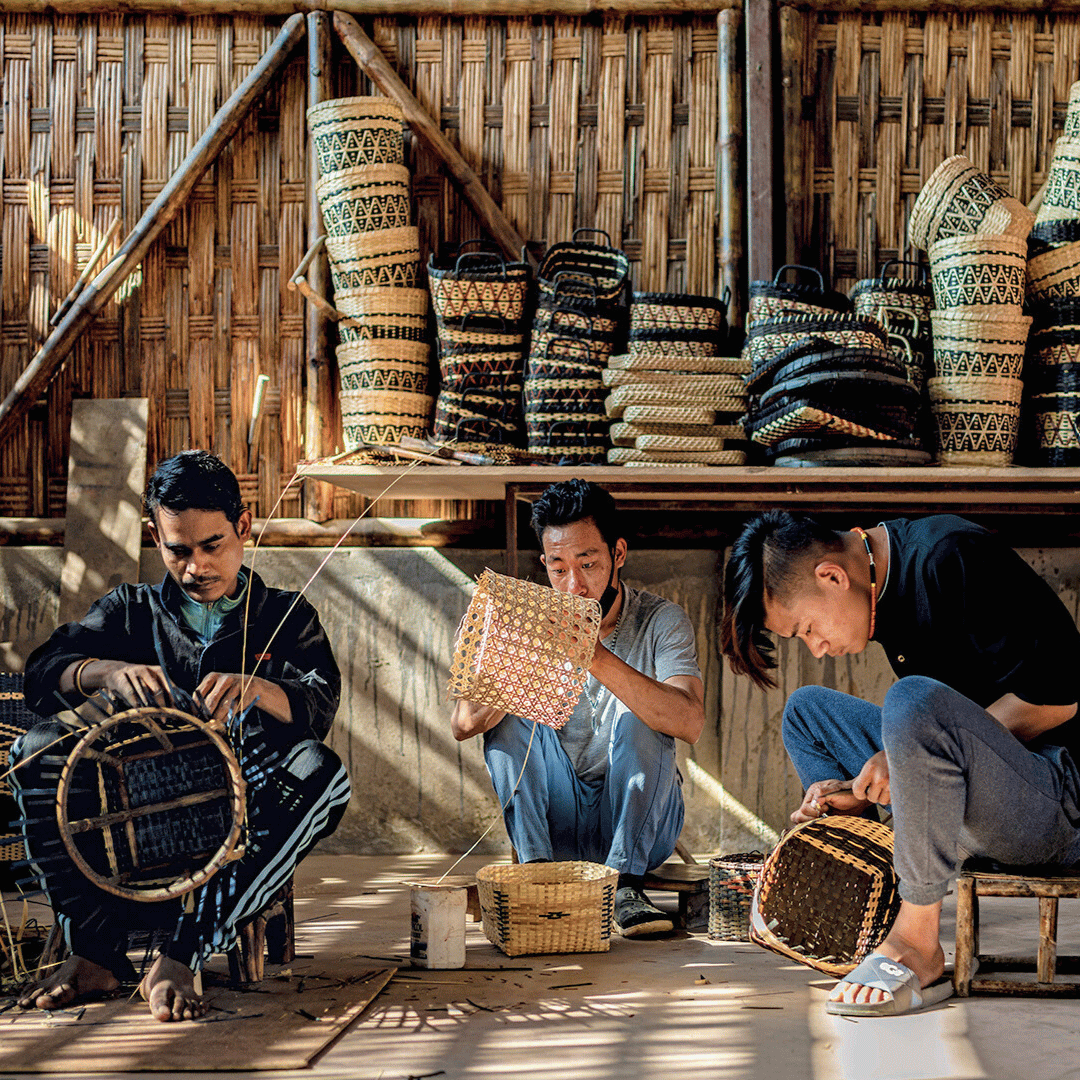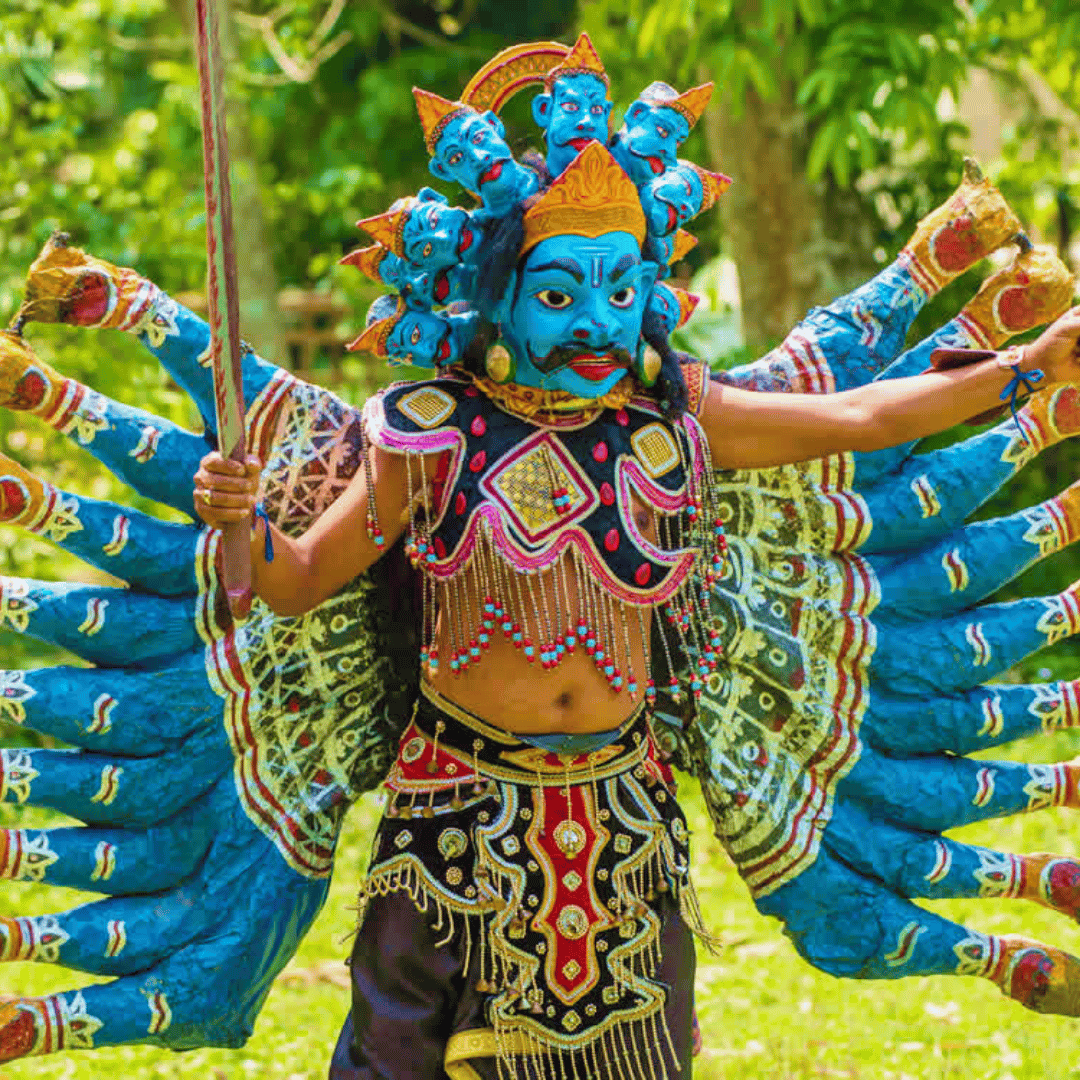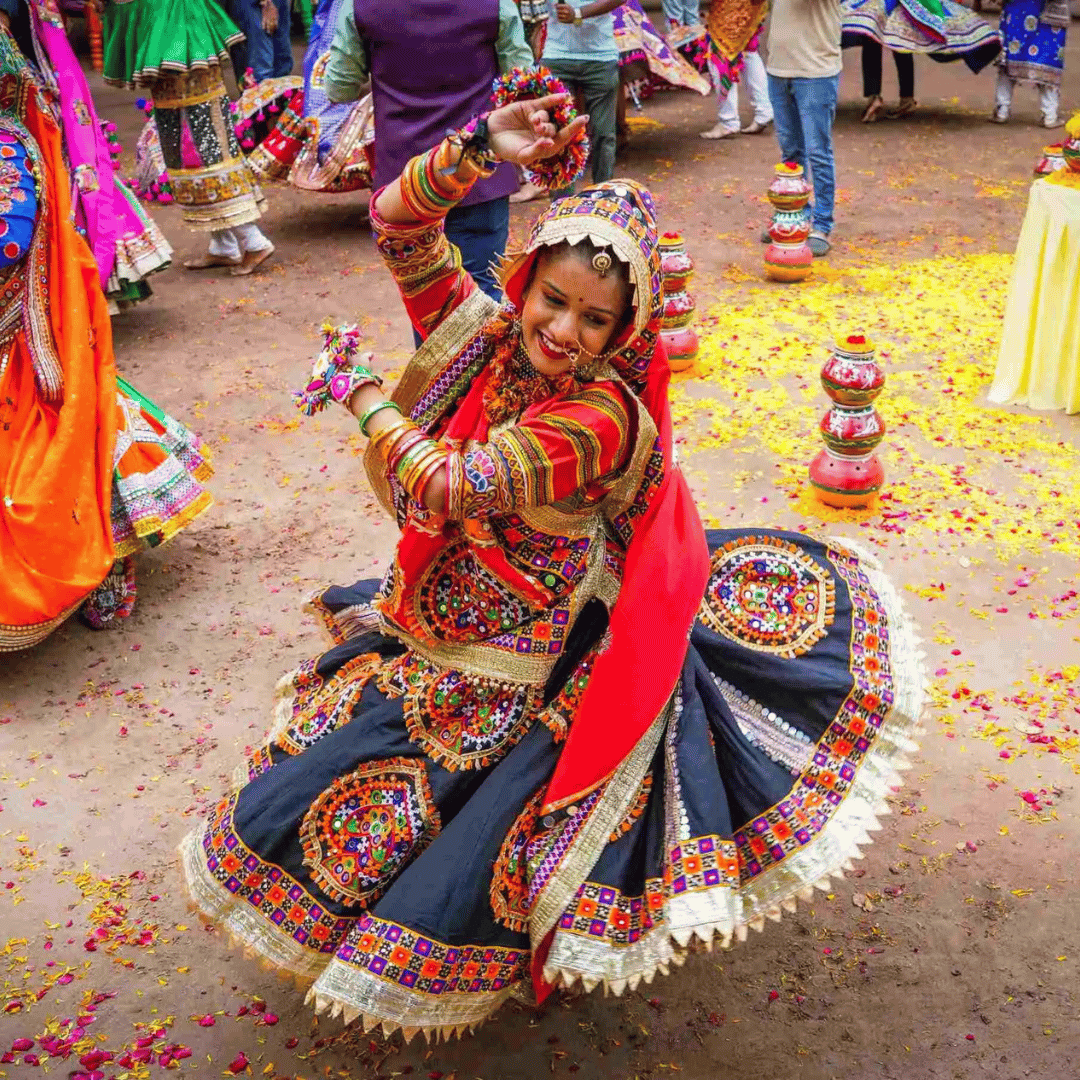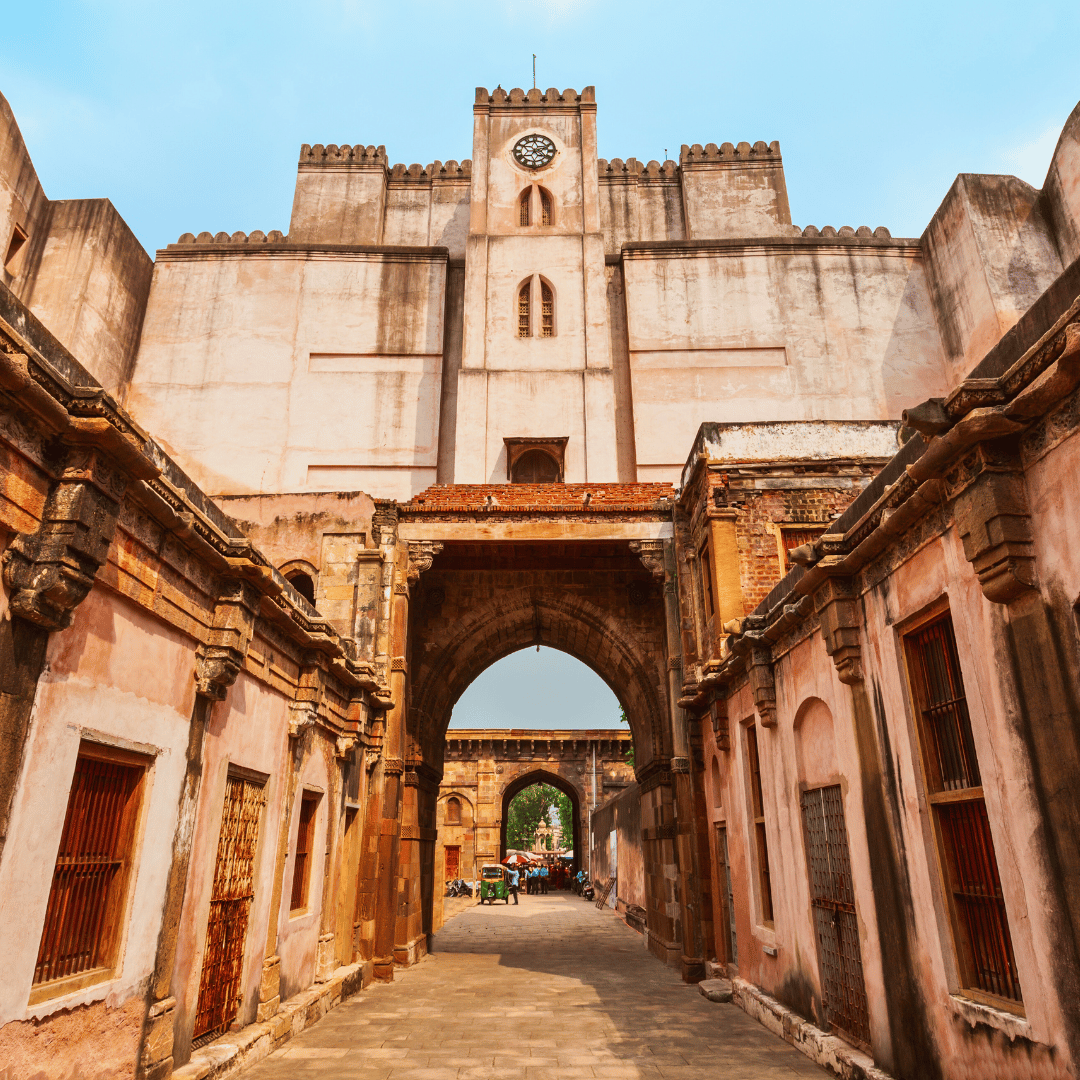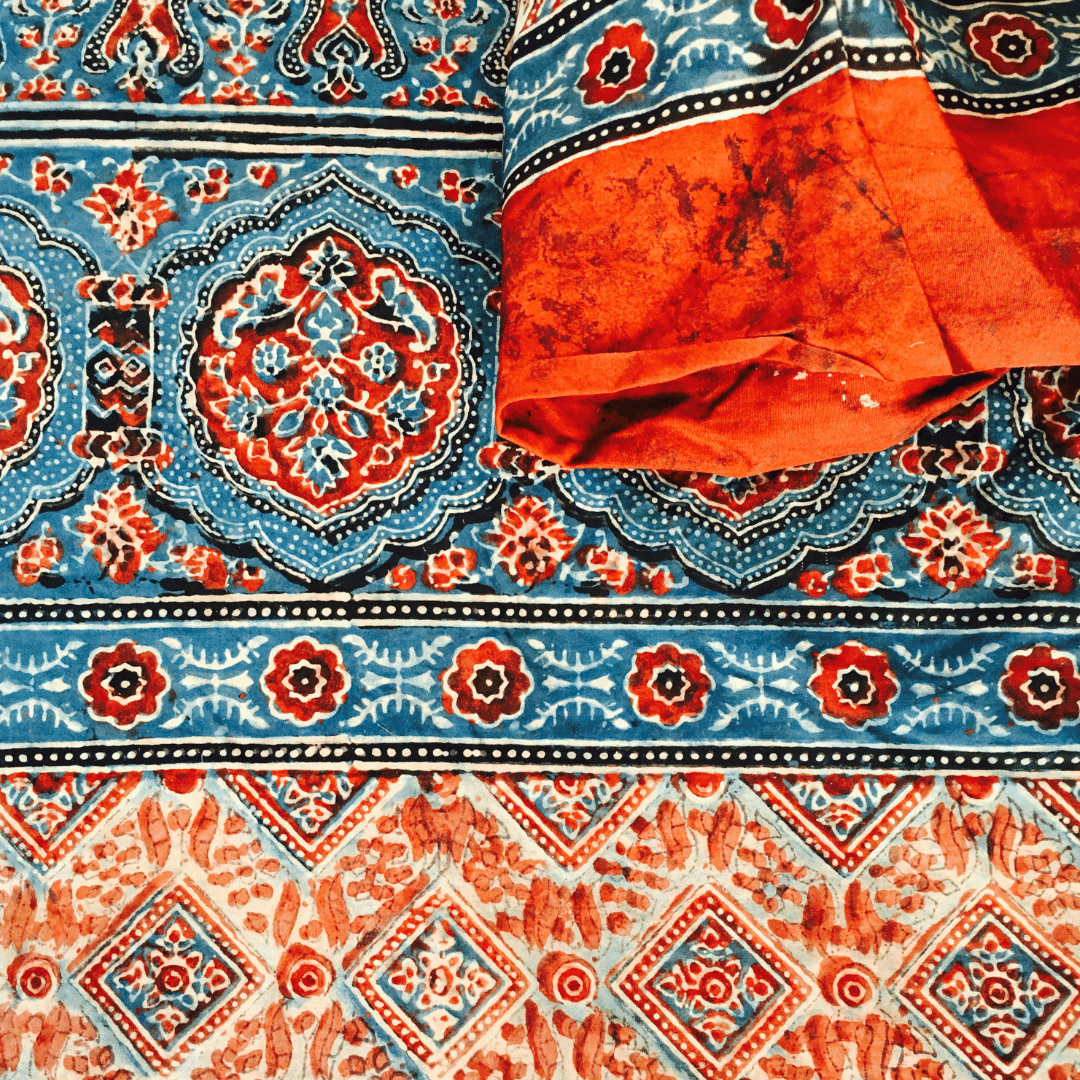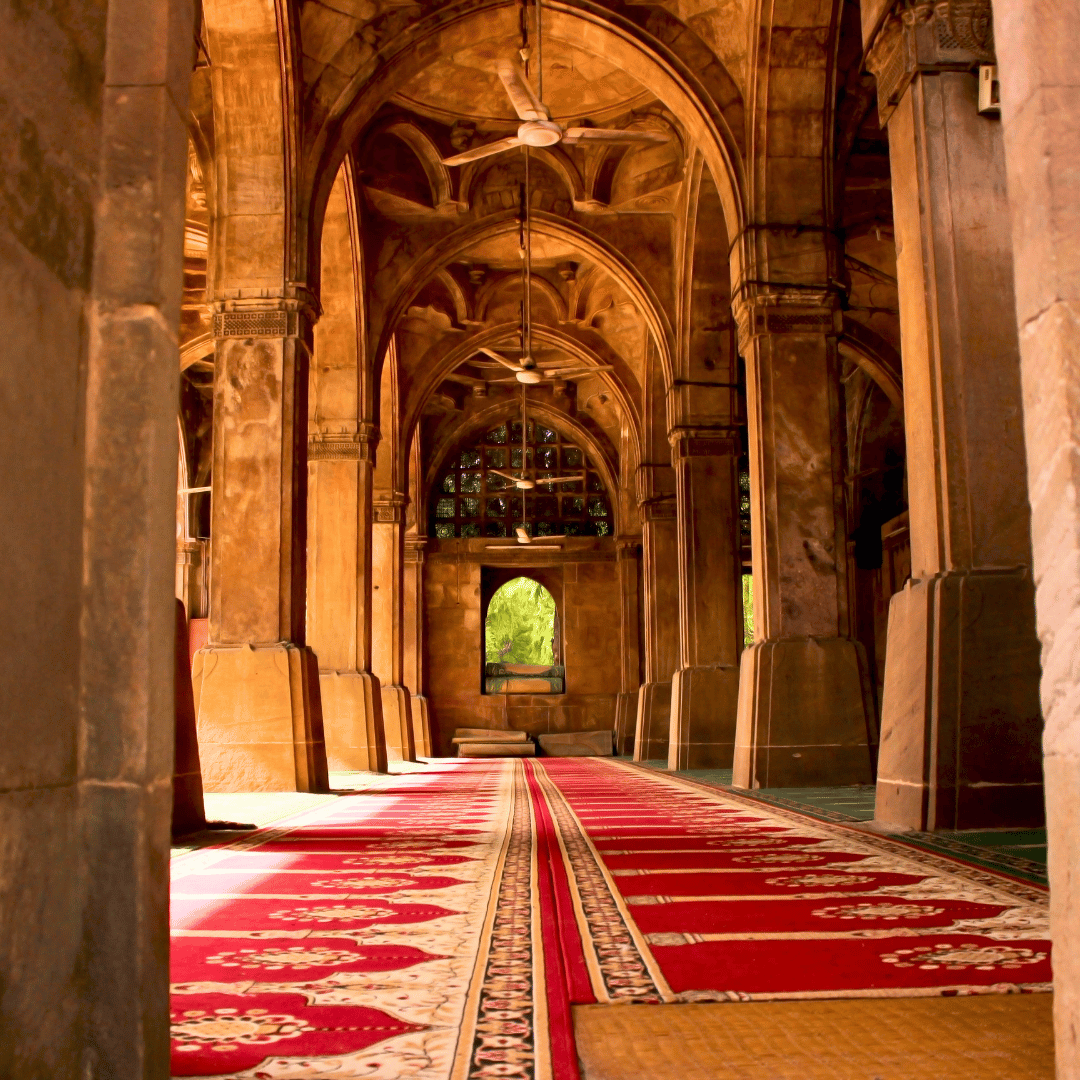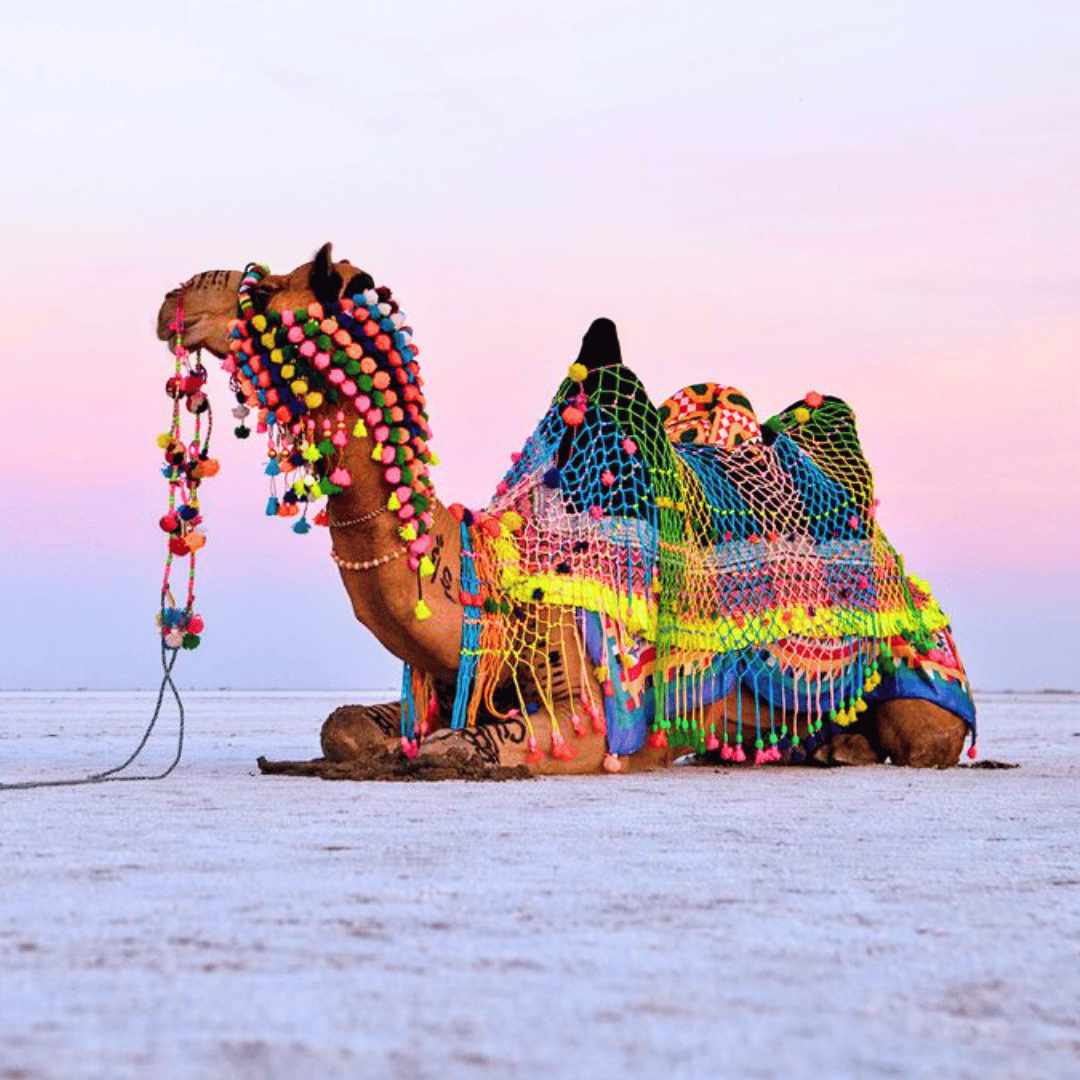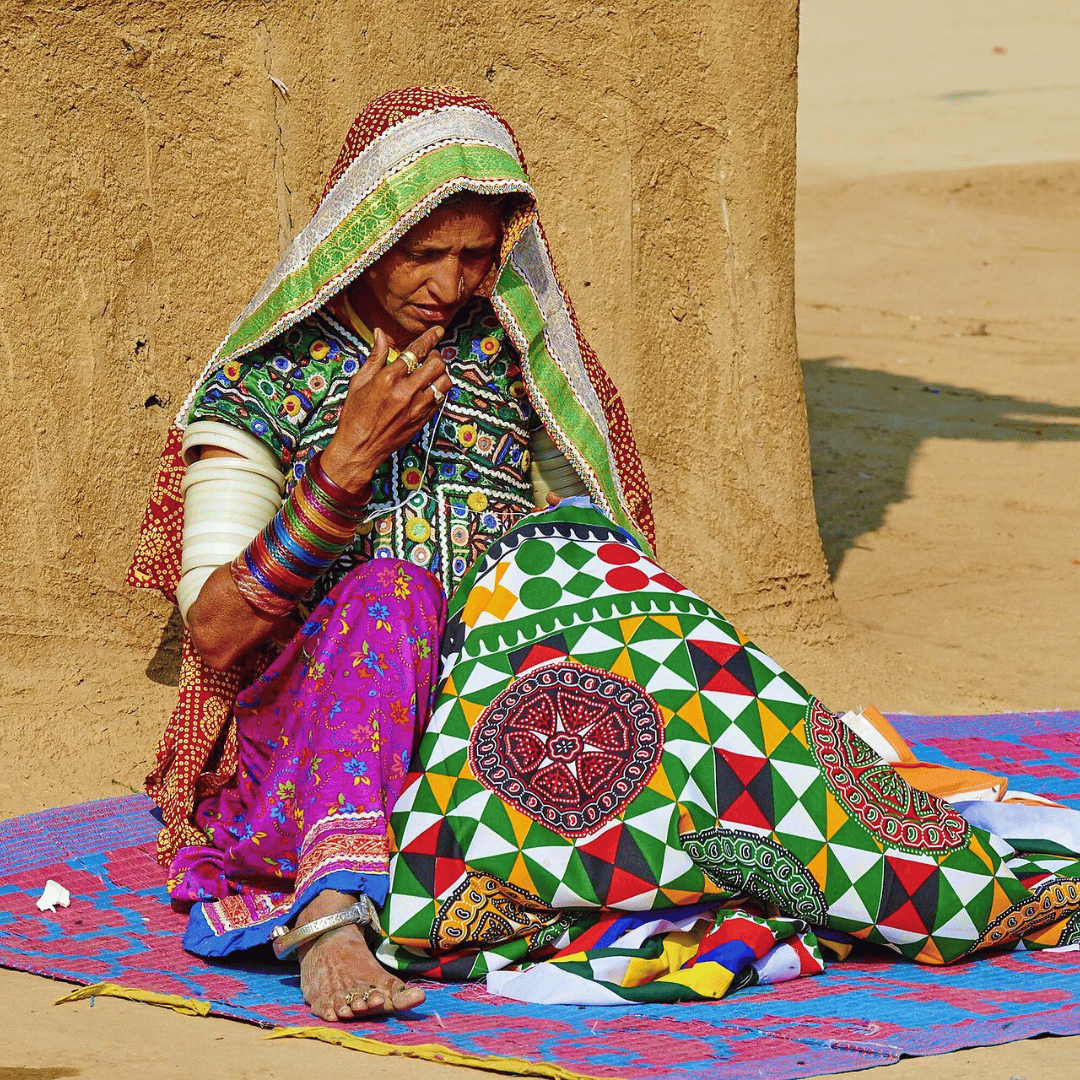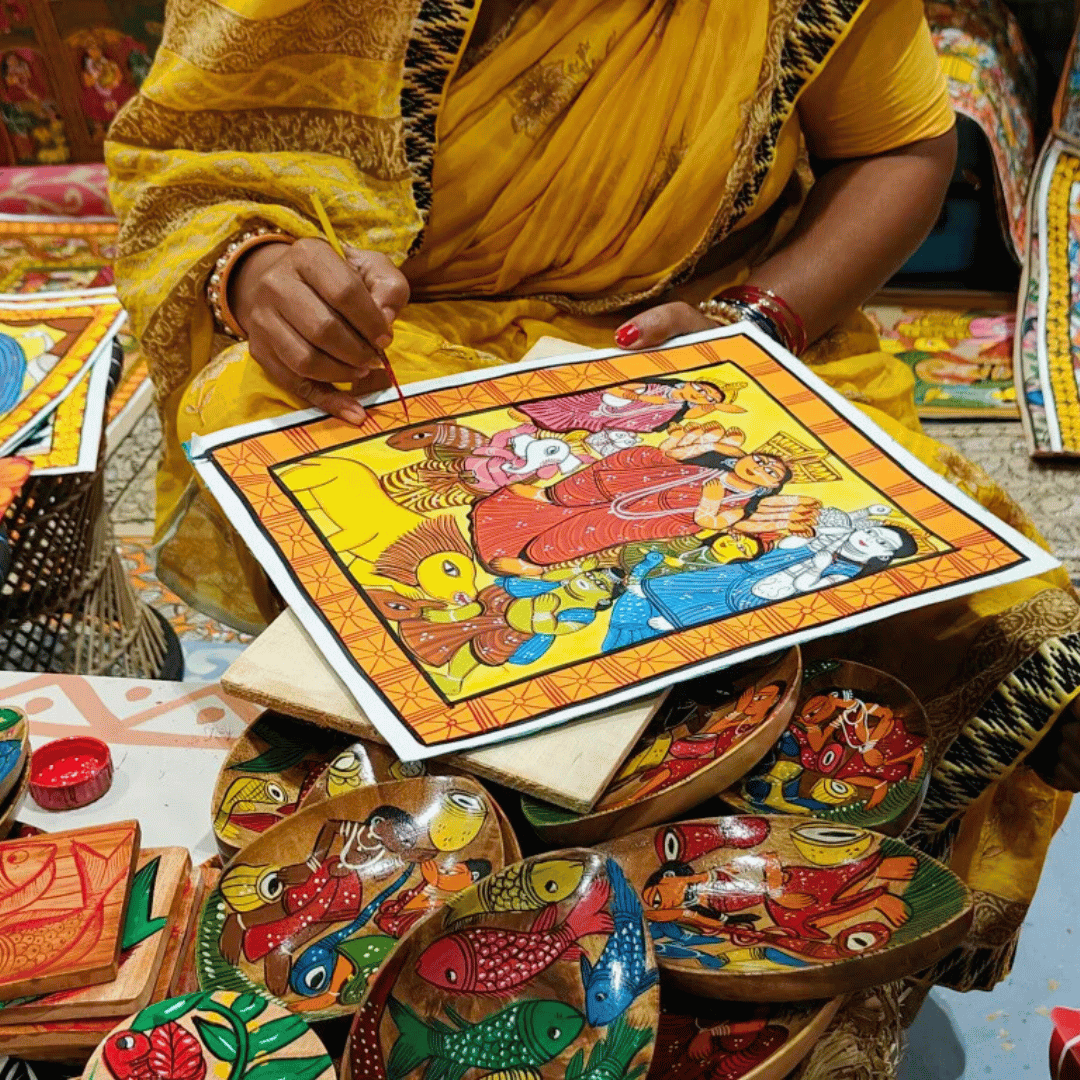

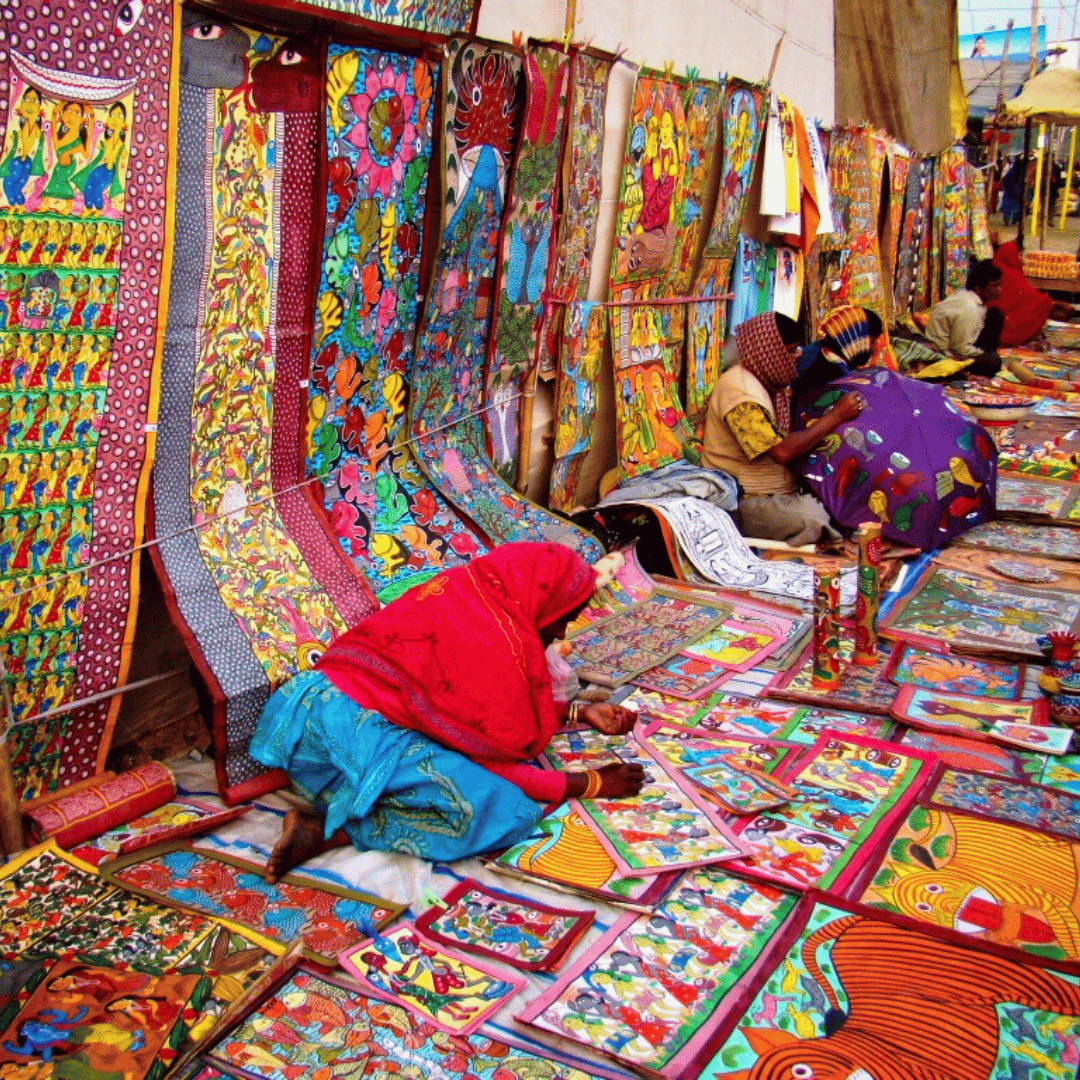



15 Days - East India Textile Tour
From $6750.00 Per Person
Kolkata - Bishnupur - Shantiniketan - Murshidabad - Malda - Siliguri - Darjeeling - Gangtok - Bagdogra
Discover the threads that connect tradition, history and artistry on this 15-day East India Textile Tour through West Bengal and Sikkim. Beginning in Kolkata and ending in Bagdogra, this thoughtfully paced journey moves from the humid plains of the Bay of Bengal to the cool Himalayan foothills. Along the way, travel through quiet villages, colonial towns and bustling markets, uncovering the deep roots of weaving traditions and textile craft unique to this region. West Bengal’s long association with silk, once favoured by Mughal nobility, is still evident today in the handwoven saris, intricate motifs and time-honoured methods preserved by rural artisans. In towns like Bishnupur, Shantiniketan and Murshidabad, visit weaving studios, co-operatives and private homes to learn directly from the makers. Gain insight into Baluchari and Kantha traditions, and see how textiles remain a living, evolving art form. This itinerary includes heritage walks, visits to terracotta temples, historical landmarks and museums that provide context to the region’s textile story. The landscapes are equally varied - from rice paddies and mango orchards in Malda to the forested hills near Darjeeling and Gangtok. With the support of local guides, this adventure is ideal for those with a genuine interest in textile craft and a willingness to travel off the beaten track.
Trip Highlights
Visit artisan communities in Murshidabad, Bishnupur and Shantiniketan to explore traditional techniques in Baluchari, Kantha and silk weaving through hands-on encounters with local weavers
Travel across varied landscapes from the plains of West Bengal to the Himalayan foothills of Sikkim, experiencing the cultural and geographic diversity of East India
Enjoy regional cuisine throughout the journey, with opportunities for guided street food tastings and optional cooking demonstrations that add a culinary dimension to the tour
15 Days - East India Textile Tour
From $6750.00 Per Person
Kolkata - Bishnupur - Shantiniketan - Murshidabad - Malda - Siliguri - Darjeeling - Gangtok - Bagdogra
Discover the threads that connect tradition, history and artistry on this 15-day East India Textile Tour through West Bengal and Sikkim. Beginning in Kolkata and ending in Bagdogra, this thoughtfully paced journey moves from the humid plains of the Bay of Bengal to the cool Himalayan foothills. Along the way, travel through quiet villages, colonial towns and bustling markets, uncovering the deep roots of weaving traditions and textile craft unique to this region. West Bengal’s long association with silk, once favoured by Mughal nobility, is still evident today in the handwoven saris, intricate motifs and time-honoured methods preserved by rural artisans. In towns like Bishnupur, Shantiniketan and Murshidabad, visit weaving studios, co-operatives and private homes to learn directly from the makers. Gain insight into Baluchari and Kantha traditions, and see how textiles remain a living, evolving art form. This itinerary includes heritage walks, visits to terracotta temples, historical landmarks and museums that provide context to the region’s textile story. The landscapes are equally varied - from rice paddies and mango orchards in Malda to the forested hills near Darjeeling and Gangtok. With the support of local guides, this adventure is ideal for those with a genuine interest in textile craft and a willingness to travel off the beaten track.
Trip Highlights
Visit artisan communities in Murshidabad, Bishnupur and Shantiniketan to explore traditional techniques in Baluchari, Kantha and silk weaving through hands-on encounters with local weavers
Travel across varied landscapes from the plains of West Bengal to the Himalayan foothills of Sikkim, experiencing the cultural and geographic diversity of East India
Enjoy regional cuisine throughout the journey, with opportunities for guided street food tastings and optional cooking demonstrations that add a culinary dimension to the tour
Itinerary
-
Welcome to India! You will be met on arrival at Kolkata Airport and transferred to your hotel, where you’ll have time to settle in and rest after your journey.
Kolkata, often referred to as the City of Joy, offers a fascinating blend of contrast, culture and creativity. Once the capital of British India until 1911, the city has played a significant role in shaping the political, artistic and intellectual life of the country. Today, it serves as the capital of West Bengal and is home to a vibrant mix of people, languages and traditions. With over four centuries of layered history, Kolkata is a city where colonial-era buildings, Victorian mansions and historic temples share space with lively markets, bookstores, art galleries and cutting-edge urban life.
From its cultural icons like Rabindranath Tagore and Satyajit Ray, to its strong craft traditions and culinary diversity, Kolkata is a city that rewards curiosity. Whether it’s the handwoven textiles of Bengal, the street food stalls serving puchkas and kathi rolls, or the ever-present buzz of political debate, Kolkata is always in motion.
This evening, begin your introduction to the city with a dinner cruise on the Hooghly River, a distributary of the Ganges. As you glide past riverbank landmarks, bridges and colonial ghats, you’ll see the city from a different perspective. The cruise offers a relaxed setting to enjoy regional cuisine while observing Kolkata’s skyline and evening rituals along the water - a fitting start to your journey through East India.
-
This morning, begin your day with a visit to Kolkata’s vibrant Flower Market, located along the eastern bank of the Hooghly River near the iconic Howrah Bridge. One of the largest wholesale flower markets in Asia, it is a lively, colourful and aromatic experience, with thousands of marigolds, roses, jasmine and other blooms being traded and transported for use in temples, weddings and daily rituals across the city. It’s a place where local life unfolds in full view - porters weaving through crowds, early morning prayers at riverside shrines, and traders calling out prices in a flurry of activity.
Next, travel to Panchla in the district of Howrah, a centre for Zardozi embroidery. Here, you’ll have the opportunity to step inside local workshops and observe skilled artisans at work, using traditional methods to create elaborate patterns with gold and silver threads on fabric. Once reserved for royalty, Zardozi remains a meticulous and highly valued craft.
Return to the city and take a drive around the historic precinct of Dalhousie Square, now known as B.B.D. Bagh. This area is home to some of Kolkata’s most significant colonial-era buildings, including the Writers’ Building, General Post Office and the former Governor’s House. Continue on to visit Mother Teresa’s House, the global headquarters of the Missionaries of Charity. Here you can see her tomb and view the small, modest room where she lived and worked for decades.
Later, visit two notable textile spaces: Sokhiya and The Weavers Studio. These workshops and boutiques are known for their dedication to fine, handwoven textiles, offering high-end saris, scarves and yardage that reflect both heritage techniques and contemporary design. This visit offers the chance to meet the makers, learn about their processes and see how Kolkata continues to innovate while honouring its textile traditions.
-
This morning, set out on a day trip to Phulia, a renowned weavers’ village located about 90 kilometres from Kolkata. The village is known for its skilled artisans who specialise in Tangail saris, a weaving tradition that originated in present-day Bangladesh and has been carefully preserved and adapted in West Bengal.
Tangail saris are distinctive for their delicate, repetitive patterns that give the appearance of fine embroidery. The borders often feature motifs inspired by temple architecture and the rudraksha bead, commonly used in Hindu rituals. These saris come in both cotton and silk varieties: the lighter cotton versions are favoured during the hot summer months, while the silk ones, often in deeper shades, are worn for festivals and special occasions. As you walk through the village, you’ll see looms in motion, threads being dyed, and saris taking shape - a rare opportunity to witness the entire process from yarn to finished fabric.
After exploring Phulia, continue on to Krishnanagar, a town well regarded for its long-standing artistic heritage. In the neighbourhood of Ghurni, visit the community of clay sculptors who have been creating religious idols and lifelike figurines for generations. These artists produce statues of Hindu deities for worship during annual festivals, as well as finely detailed clay models depicting scenes from daily life. The open-fronted studios and small shops are welcoming spaces where you can observe the creative process, speak with the artists and gain insight into this unique local craft.
Later in the afternoon, drive back to Kolkata, with the return journey taking approximately three hours.
-
This morning, depart early from your hotel in Kolkata with a packed breakfast for the drive to Bishnupur, a journey of approximately five hours through the rural landscape of West Bengal. On arrival, enjoy a short refreshment break before beginning your exploration of this historically rich town.
Bishnupur was once the capital of the Malla dynasty, which ruled for nearly a thousand years. Today, it is best known for its unique terracotta temples, which stand as remarkable examples of laterite and brick architecture adorned with detailed relief work. These temples are not only religious sites but also living expressions of Bishnupur’s artistic heritage. The term ‘terracotta’ - meaning baked earth - has become closely associated with the town and its many crafts.
Beyond its temples, Bishnupur is a thriving centre for terracotta pottery, jewellery and figurines, often inspired by scenes of ancient battles, royal processions and mythological themes. The streets are lined with artisans’ stalls and workshops where you can observe traditional techniques and browse a variety of handmade pieces.
Bishnupur is equally known for its silk weaving, particularly the famous Baluchari saris made from fine tussar silk. These saris are woven using a punch-card technique, with detailed motifs from the Mahabharata and other epics incorporated into the border and pallu, making each piece a wearable story. Other crafts found here include bell metal utensils, conch-shell jewellery, and the unique Dashavatar playing cards, which depict the ten incarnations of Lord Vishnu.
This visit offers a rich introduction to the intersection of history, mythology and craftsmanship that defines Bishnupur’s cultural legacy.
-
This morning, depart Bishnupur and drive to the nearby village of Panchmura, known as one of the primary centres for terracotta art in Bengal. Here, you'll meet local artisans who specialise in crafting the iconic Bankura horse - a symbol of Bengal’s folk art - along with other terracotta figures, tiles and decorative items. The village offers a first-hand look at how traditional techniques continue to thrive in a community deeply connected to its craft heritage.
Continue your journey towards Shantiniketan, which translates to "abode of peace". Once a quiet village inhabited by the Santhal community, Shantiniketan evolved into an important cultural and educational hub through the vision of Rabindranath Tagore. What began as an experimental school on his father’s land grew into Visva-Bharati University: a globally recognised institution focused on holistic, arts-based education and the idea of learning in harmony with nature.
Shantiniketan continues to attract students, artists and scholars from across India and around the world, drawn by its unique blend of creativity, philosophy and rural setting. The campus itself features open-air classrooms, art studios and museums that reflect Tagore’s ideals and the cultural legacy he fostered.
This evening, enjoy a performance by a traditional Baul singer, wandering minstrels of Bengal known for their soulful ballads and spiritual poetry. The Bauls use simple instruments and expressive lyrics to share messages of love, humanity and the search for the divine, offering a powerful glimpse into Bengal’s living folk traditions.
-
Spend a full day exploring Shantiniketan and its surroundings, with a focus on the cultural, artistic and educational institutions that define this unique town. Begin with a visit to the Visva-Bharati University campus, founded by Rabindranath Tagore, where the philosophy of learning in open spaces and through the arts remains central. A walk through the fine arts faculty at Kala Bhavana offers a glimpse into the creative spirit that continues to flourish here, with student artworks often on display.
Continue to the Rabindra-Bhavana Museum and the Chhatimtala meditation site. Rabindra-Bhavana houses a rich collection of Tagore’s manuscripts, photographs and personal items, while Chhatimtala is a peaceful, tree-shaded space once used by his father for meditation and reflection.
A highlight of the day is the Uttaryan Complex, a cluster of five residences - Punascha, Shyamali, Konarka, Udichi and Udayan - where Tagore lived and worked. Each house reflects a different phase of his life and architectural style. Also visit the nearby Bichitra building, now converted into a museum with a collection of Tagore’s belongings and memorabilia.
In addition to its academic and literary legacy, Shantiniketan is a hub for traditional crafts. Visit local textile outlets and the Amar Kutir Society for Rural Development, an organisation supporting artisans through the promotion of handmade textiles, leatherwork, and embroidery. It offers a chance to see how rural craftsmanship is being sustained through community-driven initiatives.
If your visit coincides with a Saturday, don’t miss the afternoon haat, a lively open-air market where locals gather to sell handicrafts, textiles, artwork and regional snacks. It’s a colourful, social event that reflects the rhythm and creativity of life in Shantiniketan.
-
This morning, depart Shantiniketan and travel to Murshidabad, a drive of approximately four hours through the countryside of West Bengal. On arrival, settle in and begin exploring this historically significant city, once a thriving centre of politics, culture and commerce.
Murshidabad served as the last capital of independent Bengal before the advent of full British control. It was named after Nawab Murshid Quli Khan, who served as the Dewan of Bengal, Bihar and Orissa under the Mughal Empire. In 1717, he moved the regional capital to Murshidabad, transforming it into a seat of immense wealth and influence. Strategically located on the banks of the Bhagirathi River, the city developed into a major trading post, especially renowned for its fine silk, ivory and handicrafts.
Murshidabad was not only a political hub but also a cultural one, with grand palaces, mosques, gardens and administrative buildings reflecting the opulence of the era. Although the British East India Company later shifted the capital to Kolkata in 1773, Murshidabad remains rich with reminders of its royal past.
Today, it retains a slower pace, where traces of Mughal, Bengali and colonial influences coexist. The city’s silk weaving tradition continues to thrive, making it an important stop on this textile-focused journey through East India.
-
Spend a full day exploring the historical and cultural landmarks of Murshidabad, once the heart of Bengal’s political power and still home to rich architectural and craft traditions. Begin with a visit to the Hazarduari Palace, the city’s most prominent attraction, whose name translates to ‘Palace of a Thousand Doors’. Built in 1837 by British architect Duncan McLeod for Nawab Najim Humaun Jah, a descendant of Mir Jafar, this grand, three-storey structure was constructed in European classical style and served as a royal residence and administrative centre.
Despite its name, only 900 of the palace’s thousand doors are real - the remaining are cleverly designed false doors intended to confuse potential intruders. Inside, there are 114 rooms and eight galleries housing an impressive museum collection. Highlights include portraits of the Nawabs, European and Murshidabad-style paintings, Chinese porcelain, antique furniture, and intricately carved ivory pieces. The armoury holds a staggering 2,700 weapons, including swords once wielded by Nawab Alivardi Khan and Siraj-ud-Daulah, although only a portion of these are on public display.
Just outside the palace stands the small but ornate Madina Mosque, featuring tiled verandahs and a replica of the tomb of the Prophet Muhammad at Medina. The nearby Imambara, a striking white structure, adds further depth to the city’s Islamic architectural heritage.
Other nearby points of interest include the Wasef Manzil, Katara Mosque, Jafarganj Cemetery, the vast Jahankosha cannon, Khosh Bagh, Katgola Palace, Nasipur Palace, Footi Mosque, Moti Jheel, and Nimak Haram Deori - famously known as the Traitor’s Gate, tied to the betrayal of Siraj-ud-Daulah.
Later, visit Tanti Para, a nearby weaving village known for its exceptional silk craftsmanship. Here, handloom weavers continue the centuries-old tradition of producing Murshidabad silk, particularly Garad and Baluchari saris, which are prized for their fine texture and mythological motifs. Spend time with the artisans to learn more about their techniques and the legacy of silk weaving that remains a defining feature of Murshidabad’s cultural identity.
-
This morning, depart Murshidabad and travel to Malda, a journey of around three hours through the scenic rural countryside of West Bengal. The drive takes you past lush farmland, small villages, and quiet stretches of mulberry plantations, giving a sense of the region’s longstanding connection to agriculture and textile production.
Malda, formerly known as English Bazar, serves as the gateway to the historic sites of Gaur and Pandua: two of Bengal’s most important medieval capitals. Gaur was the seat of power for successive dynasties, including the Buddhist Palas, the Hindu Senas, and later the Muslim Nawabs. Each left behind architectural and cultural imprints that reflect distinct phases of Bengal’s history. The ruins of Gaur, now scattered amidst mango groves and overgrown paths, include gateways, mosques and fortifications made from characteristic brick and stone.
Pandua, once an alternative capital to Gaur, houses the third largest concentration of Muslim monuments in Bengal. Here, you’ll find the Jami’ Masjid, built in 1566, an impressive structure supported by over 300 stone pillars, as well as the Nimasari Minar, a riverside tower that served as a prominent landmark and watch post during its time.
By the 18th century, the area became known for its thriving silk and cotton trade. These industries brought prosperity and helped shape the region’s economy, a tradition that continues to this day. Malda remains a major centre for mango cultivation and silk weaving, with its mulberry plantations still supporting silk production.
While in the area, visit a nearby cotton handloom weaving village to witness local artisans at work. The looms here produce fine cotton textiles using techniques passed down over generations. This visit provides insight into how traditional skills continue to support rural livelihoods in contemporary Bengal.
-
Today is dedicated to exploring the rich historical and archaeological heritage of Malda and its surrounding sites. Begin with a visit to Gaur, located near the present-day Indo-Bangladesh border. Once a flourishing capital during the 14th and 15th centuries, Gaur was a political and cultural centre for several Bengal dynasties and is now regarded as one of the most significant archaeological sites in the region.
Among the many notable relics are the Bara Sona Mosque, known for its impressive arches and brickwork, and the Dakhil Darwaza, a fortified gateway built in 1425, which once served as the main entrance to the city. Also visit the Qadam Rasul Mosque, believed to house a stone impression of the Prophet Muhammad’s footprint, and the Lattan Mosque, noted for its decorative tiles and terracotta panels. Scattered throughout the area are the remnants of an extensive fortification system, along with structures such as the Gomti Gate and Firoz Minar, the latter a striking tower with colourful enamelled tiles. Other points of interest include Gol Ghar, Chika Masjid, Qutwali Gate, the Twelve-Gated Mosque, and Qudm-e-Rasul, each offering a glimpse into the region’s layered past.
In the afternoon, continue to Pandua, located to the north of Malda. Once a secondary capital to Gaur, it is home to the monumental Adina Mosque, built in 1369 by Sultan Sikander Shah. At its peak, it was among the largest mosques in the Indian subcontinent. Constructed over the site of a former Hindu temple, the mosque features 378 small domes and remains an outstanding example of early Indo-Islamic architecture.
After your visit, return to Malda and board an evening train to New Jalpaiguri Junction. The train journey takes approximately four hours. Upon arrival, you will be met and transferred to your hotel in Siliguri for an overnight stay.
-
This morning, depart from Siliguri and drive to Kurseong, a scenic journey of around two hours as you ascend into the Himalayan foothills. Kurseong, locally known as “Kharsang” in the Lepcha language, means ‘Land of White Orchids’ - a name that reflects the delicate white blooms that flourish across the hillsides during spring. This small hill town is known for its cool climate, misty forests and quiet charm, offering a gentler pace than nearby Darjeeling.
While in Kurseong, visit the renowned Makaibari Tea Estate, one of the oldest organic tea gardens in the region. Although tea production pauses during the winter months, a visit still offers insight into the estate’s long-standing history and its commitment to sustainable practices. Stroll through the estate, take in the panoramic views, and learn about the cultural and economic significance of tea in the region.
In the afternoon, continue your journey to Darjeeling, a drive of approximately three hours. The road winds through mountain landscapes dotted with tea gardens and small settlements, offering glimpses of the hills and valleys that define the Eastern Himalayas.
Darjeeling, once a summer retreat for British officers, is perched along a ridge with sweeping views of some of the highest Himalayan peaks, including the famed Kangchenjunga. The town’s name is derived from ‘Dorje Ling’, meaning ‘Place of the Thunderbolt’, a reference to the Lamaist origins of the region. Known for its distinctive colonial-era charm, cool climate and world-famous tea, Darjeeling remains a cultural crossroads - where Tibetan, Nepali, Bengali and British influences all meet amidst the slopes of the mountains.
-
Spend a half day exploring the key sights in and around Darjeeling, a town rich in culture, history and Himalayan heritage. Begin with a visit to the Padmaja Naidu Himalayan Zoological Garden, established in 1958 and known for its conservation work with high-altitude wildlife. The zoo specialises in breeding endangered species such as the snow leopard, red panda and Himalayan wolf, making it a fascinating stop for those interested in alpine ecology.
Next, visit the Himalayan Mountaineering Institute, founded in 1957 in honour of Tenzing Norgay, who later served as its first field director. The museum within the institute is India’s oldest dedicated to mountaineering and offers a compelling look into the history of Himalayan exploration, with exhibits on equipment, expeditions and legendary climbers.
Continue on to the Tibetan Refugee Self-Help Centre, established in 1959 after the Dalai Lama’s escape from Tibet and the subsequent arrival of thousands of refugees into India. Set on a quiet hillside, the centre is both a home and a workspace for the Tibetan community. Visitors can watch artisans at work producing traditional handicrafts, carpets and woollen textiles, while gaining insight into the resilience and cultural preservation of the Tibetan diaspora.
You may also choose to take a joy ride on Darjeeling’s famous Toy Train, a narrow-gauge railway that winds its way through the hills. First initiated in 1878 under the vision of Sir Ashley Eden, the Darjeeling Himalayan Railway is now a UNESCO World Heritage site. The short journey offers panoramic views of the surrounding tea gardens and hillside settlements, all while riding in a piece of colonial-era engineering.
In the evening, enjoy a relaxed walk along the Mall Road, Darjeeling’s main promenade. This is a great spot to take in mountain views, stop at a café or browse the local market for handmade souvenirs, woollens and tea.
-
Today, depart from Darjeeling and journey to Gangtok, the capital of Sikkim. The drive takes approximately four hours and offers scenic views throughout - winding mountain roads, cascading streams, forested slopes, and occasional glimpses of the Teesta River flowing far below. As you ascend into Sikkim, the landscape shifts subtly, with a greater sense of isolation and unspoilt natural beauty becoming apparent.
On arrival in Gangtok, check into your accommodation and take time to unwind. Nestled along a ridgeline at an altitude of around 1,650 metres, Gangtok is both a functioning administrative capital and a deeply spiritual centre. It strikes a balance between modern infrastructure and traditional mountain-town life. Clean, orderly, and surrounded by spectacular scenery, the city offers sweeping views of the eastern Himalayas on clear days, including, at times, the majestic Kangchenjunga.
Gangtok is also a cultural crossroads, with a population made up of ethnic Nepalis, Lepchas, Bhutias, and Tibetans - a blend that is reflected in its food, language, religious life and public festivals. Colourful prayer flags flutter along roadsides, and Buddhist monasteries dot the surrounding hillsides, adding a quiet sense of reverence to the atmosphere.
In the early evening, take a gentle walk to acquaint yourself with the city. Begin with MG Marg, Gangtok’s popular pedestrian street, which is free from traffic and pollution. Lined with cafés, bakeries, bookshops and local boutiques, it’s a lively and well-kept space where locals gather in the evenings. You might also explore nearby alleys and markets selling Sikkimese handicrafts, woollens, prayer items and local tea blends. The walk offers a relaxed way to absorb the town’s character, and to observe its unique blend of tradition and modern life.
-
Today is dedicated to exploring the peaceful and picturesque village of Khonoma, a place where cultural heritage and environmental stewardship go hand in hand. Begin your morning with a guided walk through the village and its surrounding landscape. Follow old stone pathways and age-worn steps as you make your way down to the terraced rice fields that cascade along the hillsides. These terraces have been cultivated by the Angami people for generations, carved meticulously into the slopes and maintained using traditional methods that work in harmony with the terrain. Thanks to the village’s varied elevation and rich soils, an impressive range of around twenty rice varieties are grown here - a testament to the community’s agricultural knowledge and ingenuity.
Khonoma is celebrated not just for its beauty and history, but also for its commitment to conservation. In a bold and forward-thinking move, the villagers declared Khonoma India’s first ‘green village’ - a title that reflects their decision to ban logging and hunting within their lands in an effort to protect the forest and its wildlife. This shift was part of a wider, community-led effort to restore balance between people and nature, following years of overhunting and environmental decline.
In 1998, the village went a step further by establishing the Khonoma Nature Conservation and Tragopan Sanctuary (KNCTS), one of the few community-managed conservation areas in the country. Spanning more than 70 square kilometres, the sanctuary is owned and maintained by the villagers themselves, and has become a model for grassroots conservation. The reserve is home to a variety of rare and endangered species, both plant and animal, and is especially renowned as a habitat for the Blyth’s Tragopan - a shy, vibrantly coloured pheasant that is rarely seen elsewhere. Birdwatchers and nature enthusiasts will find plenty to appreciate here, but even a casual walk through the forest offers a chance to experience the richness of this preserved ecosystem.
Throughout the day, you’ll have opportunities to interact with local residents, visit traditional homes, and learn more about Khonoma’s sustainable practices and history of resistance - both to colonial forces in the 19th century and to ecological threats in more recent decades. Whether you're taking in the views, exploring the fields, or listening to stories over a shared meal, your time in Khonoma offers a rewarding insight into a community that has chosen to live with respect for both culture and the land.
-
Today you’ll travel to Majuli Island, the largest river island in India and one of the most unique and culturally rich places in the country. Located in the heart of the mighty Brahmaputra River, Majuli is accessed by a scenic journey that includes a ferry crossing through a landscape of serene beauty. As you cruise across the river, take in the views of golden rice fields, lush green meadows and wildflowers lining the banks - a tranquil passage that reflects the slower pace of life on the island.
Majuli is more than just a geographical marvel - it is a centre of Assamese culture and tradition, with a history rooted in Vaishnavite philosophy, tribal heritage, and ecological diversity. Once you arrive and settle in, begin your afternoon with a visit to a nearby Mishing tribal village. The Mishing are one of the island’s prominent indigenous communities, and handloom weaving plays a central role in both their economy and their cultural identity. Women here are the primary weavers, creating beautifully patterned fabrics on traditional looms set up in their stilted homes. Using cotton and Assam’s famous Muga silk - prized for its natural golden sheen - they produce exquisite shawls, sarongs and wraps featuring distinctive geometric and floral motifs. You’ll have the opportunity to watch the weavers at work and learn about the symbolism behind their designs, many of which have been passed down through generations.
Later, continue to a local mask-makers’ workshop, where artisans craft traditional masks used in the island’s famed satras (monastic dance-dramas). These vividly painted, often elaborate masks represent mythological characters and play a key role in storytelling performances during religious festivals. The process of mask-making is a blend of art and devotion, and visiting a workshop offers insight into a centuries-old tradition that remains alive and vibrant.
Your exploration continues with a visit to a potters’ village, where the craft is practised using ancient techniques. Unlike many other parts of India, pottery here is made without a potter’s wheel. Instead, artisans shape the clay entirely by hand, beating and moulding it before firing it in kilns fuelled by driftwood. This traditional method is said to date back to the Harappan Civilisation, making it not only fascinating but also historically significant.
For those interested in birdlife, Majuli is a true haven. The island is home to nearly a hundred species of birds, including many rare and endangered varieties. Keep an eye out for the greater adjutant stork, pelicans, whistling teals, and other waterfowl that frequent the wetlands and riverbanks. Whether you’re a keen birdwatcher or a casual observer, the abundance of wildlife adds another dimension to the island’s charm.
The India Unbound Difference
At India Unbound, we’ve spent twenty years on the ground in India, learning all about its intricacies, landscapes and cultures. We use this first-hand knowledge to carefully curate travel itineraries for our guests, and are proud to be a reputable private touring specialist. In addition, our team of local partners offer guarantees of punctuality, quality and service. All of our India private tour itineraries include all accommodation mentioned, daily breakfasts and other meals as specified, all transfers, touring and sightseeing by air-conditioned Toyota Innova or similar vehicle, and internal flights as outlined in the itinerary. Private activities and sightseeing with English-speaking local guides are included, along with entrance fees, drinking water in the vehicle, and all vehicle-related charges such as tolls, parking fees, and taxes. The cost does not include visas or international flights, personal expenses such as drinks and laundry, meals and activities not specifically listed as included, or camera fees, which are rarely applicable. Prices are listed in Australian dollars and are based on per person, twin share. Please note that these may fluctuate depending on the time of year you’re looking to travel, and the type of accommodation you prefer.







